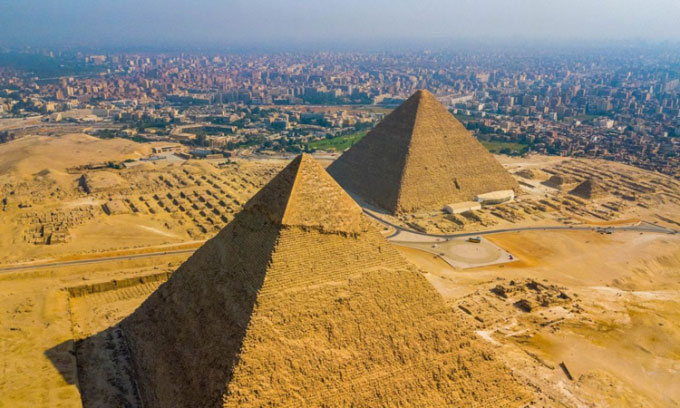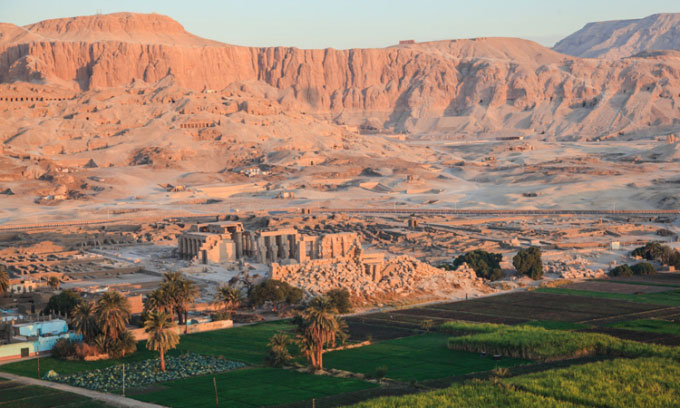After over 1,000 years of using massive pyramids as burial sites, pharaohs transitioned to underground tombs for various reasons.
For more than a millennium, Egyptian pharaohs constructed pyramids and were often buried beneath or within these monumental structures. Pharaoh Djoser (circa 2630 – 2611 BCE) began the construction of the Step Pyramid at Saqqara, while Pharaoh Ahmose I (circa 1550 – 1525 BCE) built the last royal pyramid of Egypt at Abydos.

Iconic pyramids were built by many pharaohs as tombs for over 1,000 years. (Photo: Islam Moawad).
These iconic pyramids represented the power and wealth of the pharaohs and reinforced religious beliefs. So why did they stop building pyramids shortly after the New Kingdom of Egypt (circa 1550 – 1070 BCE) began?
It appears that Egyptian pharaohs began to cease pyramid construction after the reign of Pharaoh Ahmose. Instead, they were buried in the Valley of the Kings near the capital of ancient Thebes, now known as Luxor. The oldest royal tomb in the valley was built by Pharaoh Thutmose I (circa 1504 – 1492 BCE). Pharaoh Amenhotep I (circa 1525 – 1504 BCE) may also have constructed a tomb here, although scholars are still debating this.
Experts are not entirely clear on the exact reasons why pharaohs stopped building pyramids. However, security concerns may have played a role. “There are many theories, but because pyramids were frequently robbed, hiding royal tombs in a remote valley, carving tombs into rock, and possibly having many guards for the cemetery certainly played a part,” explained Peter Der Manuelian, a professor of Egyptology at Harvard University.
“Even before they stopped building pyramids for pharaohs, Egyptians had already ceased placing burial chambers beneath these structures. The last royal pyramid at Abydos had its burial chamber located at the back, about 0.5 km away, deeper into the desert,” noted Aidan Dodson, a professor of Egyptology at the University of Bristol.
A record from Ineni, the overseer of Thutmose I’s tomb in the Valley of the Kings, may hold important clues. “I supervised the excavation of the king’s tomb alone—no one saw, no one heard,” Ineni wrote. This record clearly indicates that secrecy was a significant concern, according to Ann Macy Roth, a professor at New York University.
The natural terrain of the Valley of the Kings may explain why it became a preferred site for royal tombs. It features a mountain named el-Qurn, which resembles a pyramid. Thus, any royal tomb built in the valley could be seen as being beneath a pyramid, suggested Miroslav Bárta, an Egyptologist at Charles University. For Egyptian pharaohs, pyramids were crucial as they were the places for “ascension and transition to the afterlife,” according to Mark Lehner, president of the Ancient Egyptian Research Association.

Pharaohs may have chosen to place their tombs in the Valley of the Kings for better concealment from tomb robbers. (Photo: Takepicsforfun)
The terrain of Luxor, the capital during the New Kingdom of Egypt, may also have contributed to pharaohs stopping pyramid construction. This area has limited space and is quite rugged, Dodson noted. In other words, Luxor was too small and posed significant architectural challenges, making it unsuitable for building new pyramids.
Religious changes during the New Kingdom of Egypt emphasizing underground burial may also explain why large pyramids fell out of favor. Underground tombs in the Valley of the Kings align with this trend.
While pharaohs ceased pyramid construction, wealthy individuals continued to do so. For example, a 3,300-year-old tomb in Abydos belonging to a person named Horemheb features a 7-meter tall pyramid at its entrance, as reported by archaeologists in 2014.
In the first millennium BCE, pyramid construction also became popular in Nubia, a region that is now Sudan and part of southern Egypt. Nubia had pyramids for both royalty and individuals, though the exact number remains unclear. Nubian rulers only stopped construction about 1,700 years ago.


















































